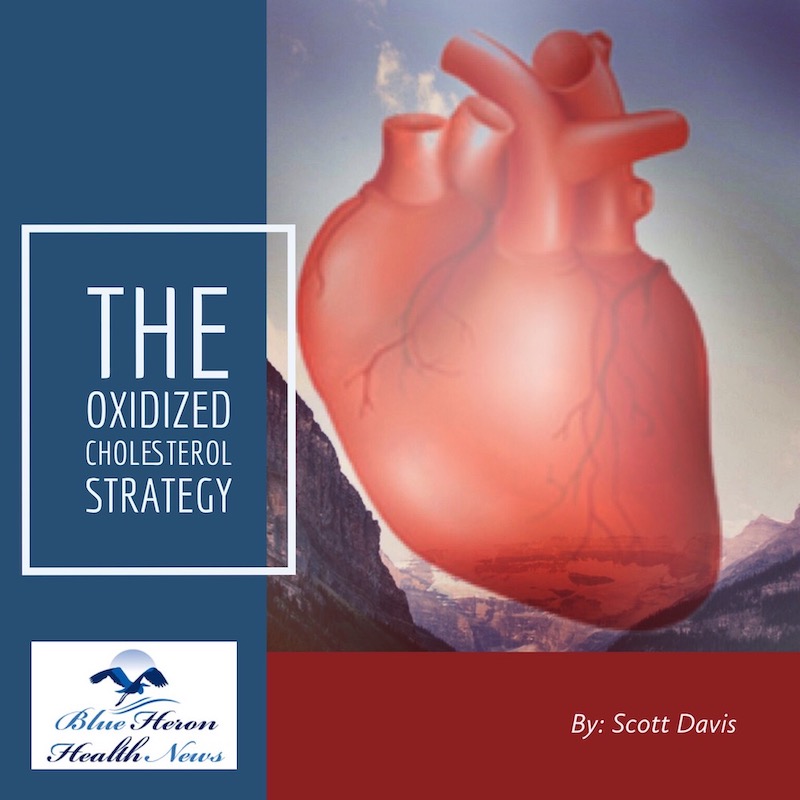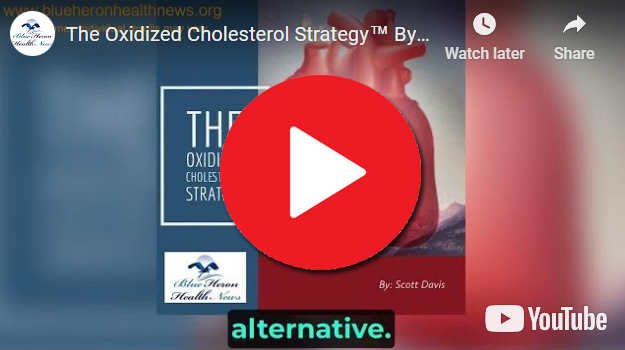
The Oxidized Cholesterol Strategy™ By Scott Davis The Oxidized Cholesterol Strategy is a well-researched program that reveals little known secret on how to tackle cholesterol plaque. This program will tell you step by step instructions on what you need to completely clean plaque buildup in your arteries so as to drop your cholesterol to healthy level.
How does oxidative stress influence cholesterol oxidation?
Oxidative stress plays a pivotal role in the oxidation of cholesterol and the progression of atherosclerosis, a major underlying cause of cardiovascular disease. Here’s a detailed explanation of how oxidative stress influences cholesterol oxidation:
1. Understanding Oxidative Stress
Definition
- Oxidative Stress: This occurs when there is an imbalance between the production of reactive oxygen species (ROS) and the body’s ability to neutralize them with antioxidants. ROS include free radicals like superoxide anion (O2-), hydroxyl radical (OH-), and non-radical species like hydrogen peroxide (H2O2).
Sources of ROS
- Endogenous Sources: Mitochondrial respiration, enzymatic reactions involving NADPH oxidase, xanthine oxidase, and the cytochrome P450 system.
- Exogenous Sources: Environmental pollutants, cigarette smoke, radiation, certain drugs, and heavy metals.
2. Oxidation of LDL Cholesterol
Mechanism of LDL Oxidation
- Initiation: ROS can extract electrons from the polyunsaturated fatty acids (PUFAs) in LDL’s lipid membrane, initiating lipid peroxidation.
- Propagation: This initial oxidation creates lipid radicals, which react with oxygen to form lipid peroxyl radicals. These radicals can further propagate the oxidation chain reaction by attacking neighboring PUFAs.
- Termination: The chain reaction continues until antioxidants like vitamin E or enzymes like glutathione peroxidase neutralize the lipid peroxyl radicals.
Components of OxLDL
- Oxidized Lipids: The lipid component of LDL undergoes peroxidation, creating malondialdehyde (MDA) and 4-hydroxynonenal (HNE), which are highly reactive and form adducts with proteins.
- Modified Apolipoprotein B (ApoB): ROS can modify the ApoB protein on LDL, altering its conformation and making it more atherogenic.
3. Cellular and Molecular Effects of Oxidized LDL (OxLDL)
Endothelial Dysfunction
- Adhesion Molecule Expression: OxLDL upregulates the expression of adhesion molecules like VCAM-1, ICAM-1, and E-selectin on endothelial cells, promoting monocyte adhesion and infiltration.
- Nitric Oxide (NO) Inhibition: OxLDL reduces NO bioavailability, impairing vasodilation and contributing to endothelial dysfunction.
Inflammation
- Cytokine Production: OxLDL stimulates the release of pro-inflammatory cytokines (e.g., TNF-α, IL-1β, IL-6) from macrophages and endothelial cells, amplifying the inflammatory response.
- Activation of NF-κB: OxLDL activates the nuclear factor-kappa B (NF-κB) pathway, which regulates the expression of various inflammatory genes.
Foam Cell Formation
- Macrophage Uptake: Scavenger receptors (e.g., CD36, SR-A) on macrophages recognize and internalize OxLDL, leading to the accumulation of cholesterol and the formation of foam cells.
- Lipid Accumulation: Foam cells are laden with lipid droplets, which contribute to the fatty streaks in atherosclerotic plaques.
4. Progression of Atherosclerosis
Plaque Formation
- Fatty Streaks: Early atherosclerotic lesions formed by the accumulation of foam cells in the arterial intima.
- Fibrous Plaques: Advanced lesions that develop a fibrous cap composed of collagen and smooth muscle cells, surrounding a lipid-rich necrotic core.
Plaque Instability
- MMP Production: OxLDL induces the production of matrix metalloproteinases (MMPs) by macrophages, which degrade the extracellular matrix and weaken the fibrous cap.
- Rupture and Thrombosis: Plaque rupture exposes the necrotic core to the bloodstream, leading to thrombus formation and potentially causing acute cardiovascular events like myocardial infarction and stroke.
5. Systemic Effects of Oxidative Stress
Impact on Other Lipoproteins
- HDL Dysfunction: Oxidative stress can oxidize HDL, impairing its ability to promote cholesterol efflux and exert its protective anti-inflammatory effects.
- Triglyceride-Rich Lipoproteins: VLDL and chylomicrons can also be oxidized under conditions of oxidative stress, contributing to lipid peroxidation and inflammation.
Metabolic Syndrome and Diabetes
- Insulin Resistance: Oxidative stress is closely linked to the development of insulin resistance, a key feature of metabolic syndrome and type 2 diabetes, both of which are risk factors for cardiovascular disease.
- Beta-Cell Dysfunction: Chronic oxidative stress can impair pancreatic beta-cell function, exacerbating hyperglycemia and metabolic disturbances.
6. Antioxidant Defense Mechanisms
Endogenous Antioxidants
- Enzymatic Antioxidants: Superoxide dismutase (SOD), catalase, and glutathione peroxidase neutralize ROS.
- Non-Enzymatic Antioxidants: Glutathione, uric acid, bilirubin, and coenzyme Q10 play critical roles in scavenging free radicals.
Dietary Antioxidants
- Vitamins and Polyphenols: Vitamins C and E, carotenoids, flavonoids, and other polyphenols found in fruits, vegetables, and whole grains bolster the body’s antioxidant defenses.
- Minerals: Selenium and zinc are essential cofactors for antioxidant enzymes.
7. Lifestyle Factors and Oxidative Stress
Diet and Nutrition
- Antioxidant-Rich Foods: Consuming a diet rich in fruits, vegetables, nuts, and seeds can enhance antioxidant defenses.
- Healthy Fats: Omega-3 fatty acids, found in fatty fish and flaxseeds, reduce inflammation and oxidative stress.
Physical Activity
- Regular Exercise: Moderate physical activity enhances endogenous antioxidant defenses and reduces oxidative stress.
- Intensity and Duration: The benefits of exercise are dose-dependent, with excessive high-intensity exercise potentially increasing oxidative stress if not balanced with adequate recovery.
Smoking and Pollution
- Avoiding Tobacco: Smoking cessation significantly reduces oxidative stress and improves cardiovascular health.
- Air Quality: Reducing exposure to environmental pollutants can mitigate oxidative stress.
Conclusion
Oxidative stress significantly influences the oxidation of cholesterol, particularly LDL cholesterol, and plays a central role in the development of atherosclerosis. By generating reactive oxygen species, oxidative stress initiates and propagates the oxidation of LDL, leading to endothelial dysfunction, inflammation, foam cell formation, and plaque development. Systemic oxidative stress further exacerbates metabolic disturbances and cardiovascular risk. Combating oxidative stress through lifestyle modifications, dietary antioxidants, and medical interventions is essential for reducing the oxidation of cholesterol and preventing cardiovascular disease.
The Oxidized Cholesterol Strategy™ By Scott Davis The Oxidized Cholesterol Strategy is a well-researched program that reveals little known secret on how to tackle cholesterol plaque. This program will tell you step by step instructions on what you need to completely clean plaque buildup in your arteries so as to drop your cholesterol to healthy level.
